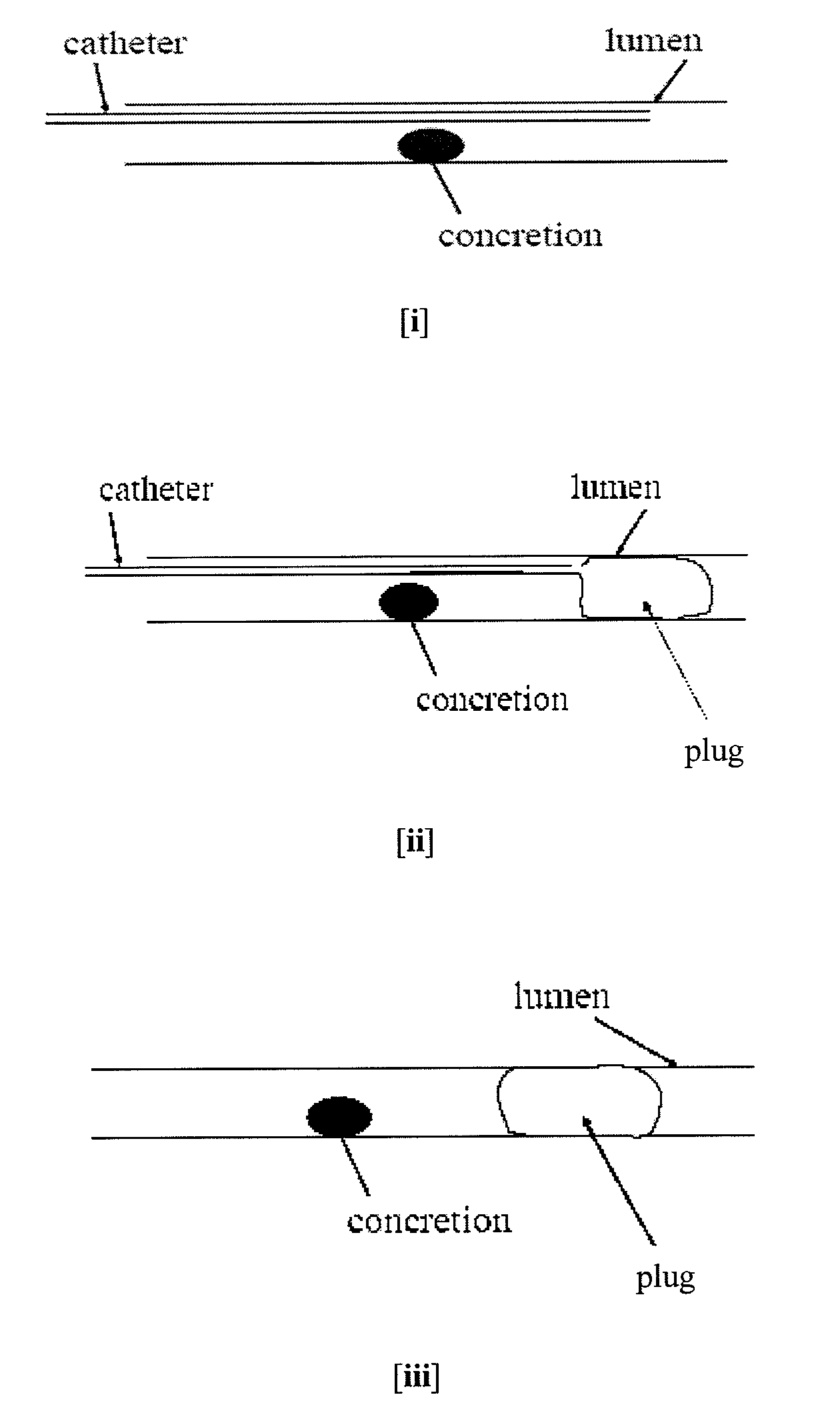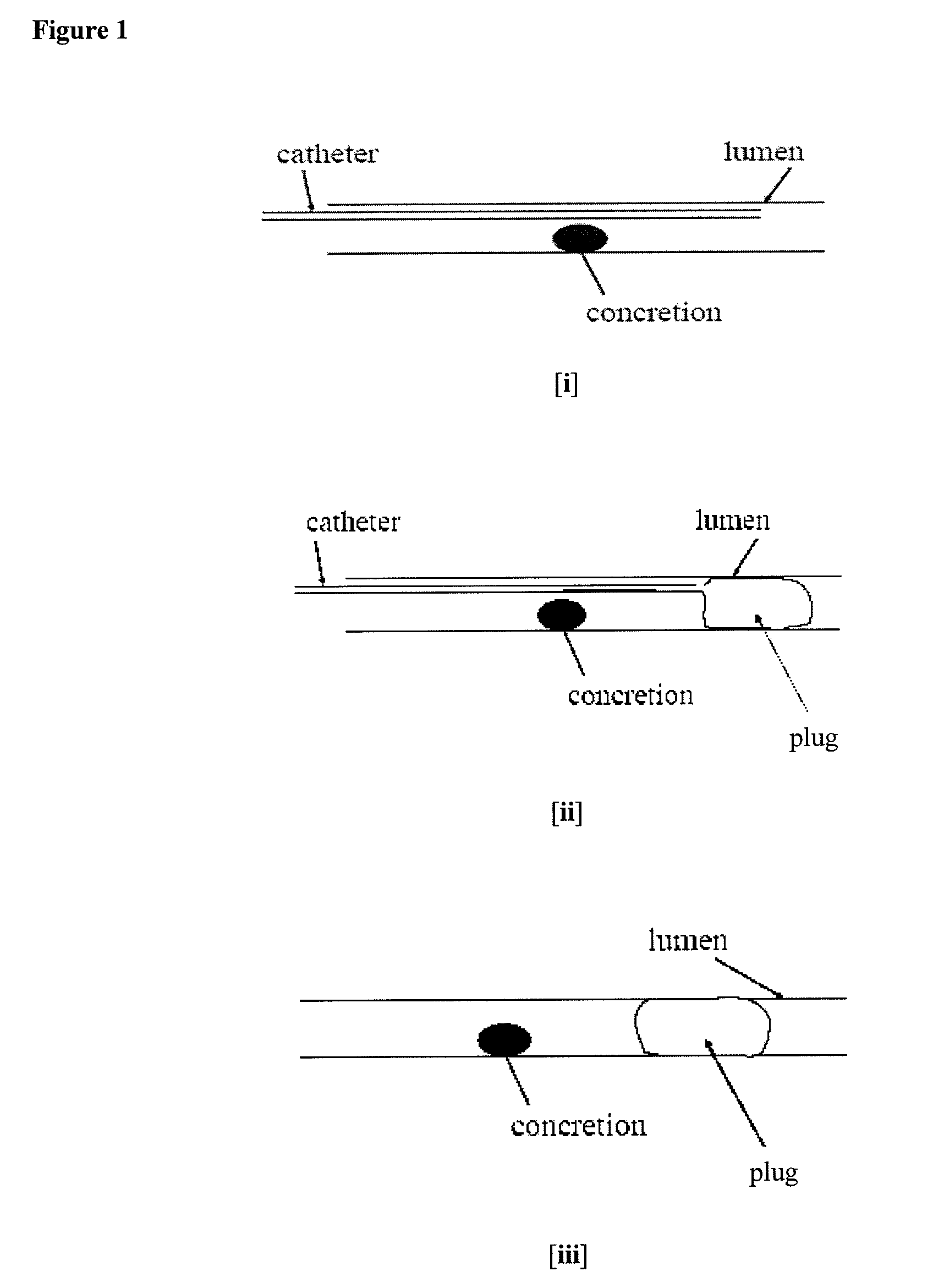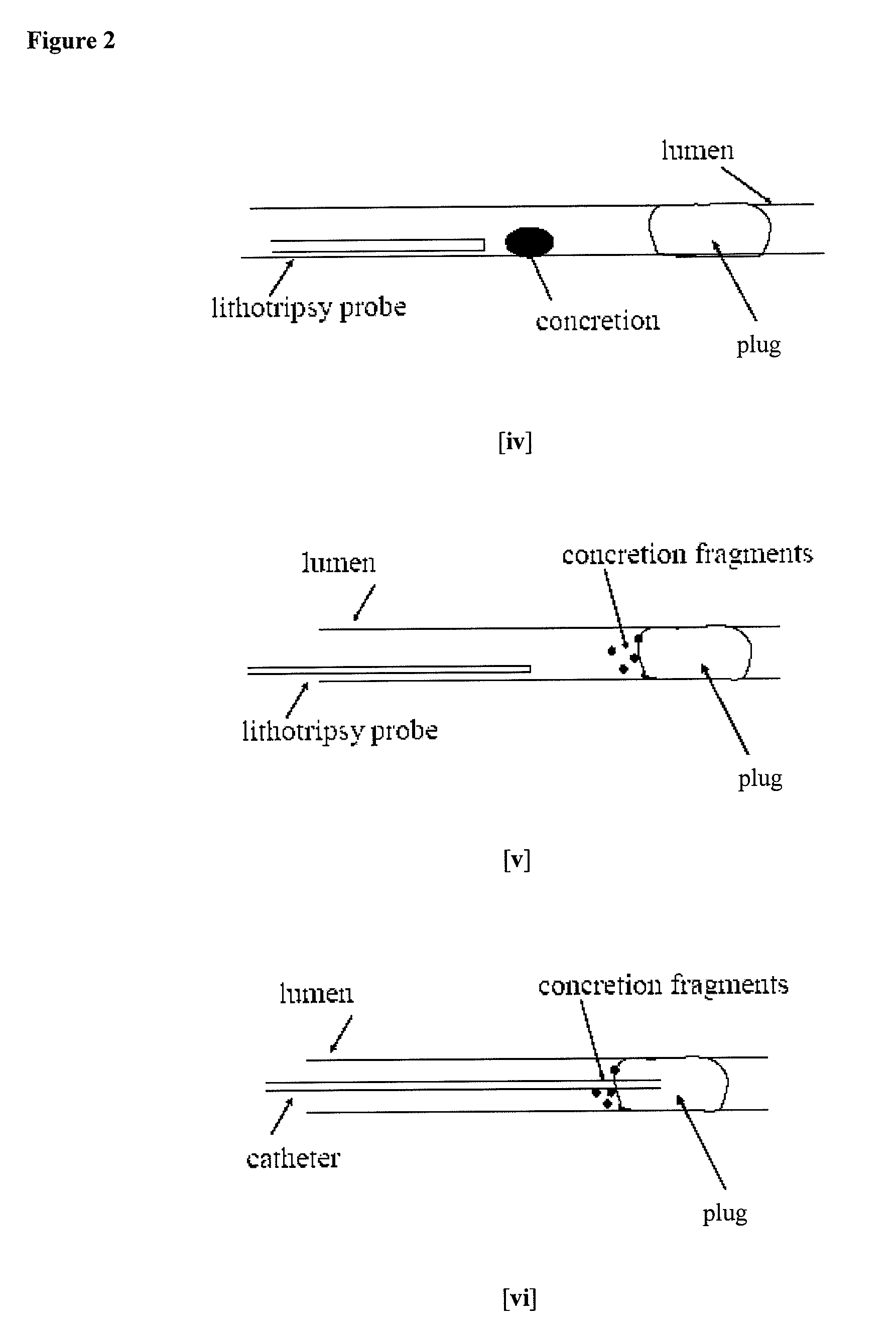Methods for Preventing Retropulsion of Concretions and Fragments During Lithotripsy
a technology applied in the field of methods for preventing the retropulsion of concretions and fragments during lithotripsy, can solve the problems of affecting the treatment of lithiasis, and causing pain and bleeding, so as to improve the treatment of lithiasis, and reduce the risk of tissue damag
- Summary
- Abstract
- Description
- Claims
- Application Information
AI Technical Summary
Benefits of technology
Problems solved by technology
Method used
Image
Examples
example 1
[0100] The following experiment may be done to confirm the polymer plugs of the invention are effective in preventing stone migration during lithotripsy in an in vitro model
[0101] A plastic tube with an inner diameter of 0.9 cm can be selected to simulate the ureter. The tube can be partially filled with saline, and a human kidney stone (calcium oxalate) can be placed into the middle of the tube. A ureteroscope can be placed inside the tube close to the stone for visualization and the compositions or compositions of the invention can be injected into the tube through a standard single-lumen ureteral catheter placed through the working channel of the scope. The stone can be fragmented using either electro-hydraulic lithotripsy or laser lithotripsy.
example 2
[0102] The following experiment can be done to evaluate the time required to dissolve the polymer plugs of the invention using saline under static (worst-case) conditions in an in vitro model.
[0103] Prior to injection a composition of the invention may be made visible by addition of a small amount of Methylene Blue. After injection of the inventive composition into a Petri dish covered in saline at 37° C., the dissolution of the plug can be followed visually. Two different shapes of the plug can be used for the dissolution tests: a sphere, which has the least amount of surface area; and a string, which has the highest surface area and more precisely represents the shape of the polymer plug in the ureter. A 20 gauge syringe can be used to extrude the string of polymer onto the bottom of the Petri dish.
[0104] The Petri dish would not disturbed and every minute the Petri dish would be observed visually. Complete dissolution can be confirmed by swirling the Petri dish. The total time ...
example 3
[0105] The following experiment can be done in order to evaluate the time required to dissolve the polymer plugs of the invention in urine under static (worst-case) conditions in an in vitro model
[0106] Fresh urine samples could be obtained from a random sample of patients attending a urology clinic and the dissolution of polymer plugs of the invention, visualized by the addition of methylene blue, can be tested by injection the polymers plugs into a urine sample at 37° C. The time to dissolution can be recorded.
PUM
 Login to View More
Login to View More Abstract
Description
Claims
Application Information
 Login to View More
Login to View More - R&D
- Intellectual Property
- Life Sciences
- Materials
- Tech Scout
- Unparalleled Data Quality
- Higher Quality Content
- 60% Fewer Hallucinations
Browse by: Latest US Patents, China's latest patents, Technical Efficacy Thesaurus, Application Domain, Technology Topic, Popular Technical Reports.
© 2025 PatSnap. All rights reserved.Legal|Privacy policy|Modern Slavery Act Transparency Statement|Sitemap|About US| Contact US: help@patsnap.com



